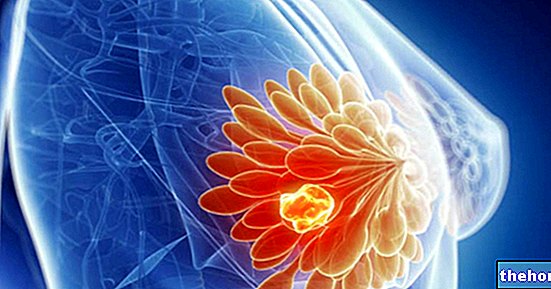Key concepts
Eclampsia is the most feared complication of gestosis: it is a potentially fatal syndrome, characterized by convulsions often associated with mental confusion, coma and visual impairment.

Eclampsia: causes
The triggering cause of eclampsia is not known. Among the possible risk factors we mention: alteration of the endocrine structure, increase in free fatty acids, vascular endothelial damage, deficit of coagulation capacity, incorrect diet, infections, nullity.
Eclampsia: symptoms
The main symptoms of eclampsia are: convulsions, confusion, visual changes, epigastric pain, nausea, headache and vomiting. In the fetus, eclampsia can cause fetal distress, placental abruption and placental haemorrhage.
Eclampsia: diagnosis
The diagnostic strategies to ascertain eclampsia are: kidney / liver function test, blood clotting capacity analysis, plasma concentration, urinalysis, blood count, trans-abdominal ultrasound.
Eclampsia: therapy
The drugs used in therapy to prevent eclampsia are: antihypertensives, anticonvulsants, antiplatelet agents, steroids. It is recommended to follow a diet rich in antioxidants.
Definition of eclampsia
Eclampsia is a serious acute complication of pregnancy, which seriously endangers the life of the pregnant woman: precisely, we are talking about the most fearful complication of pre-eclampsia, a multi-systemic syndrome characterized by the simultaneous presence of edema, arterial hypertension and proteinuria The main symptom of eclampsia is the onset of convulsions, often associated with mental confusion, coma and visual impairment.
A step back to understand ...
Pre-eclampsia (toxemia gravidarium, or gestosis) is a complex syndrome that can occur exclusively during pregnancy. By definition, preeclampsia must be characterized by the simultaneous presence of three elements:
- Blood pressure increase:> 140-160mmHg (systolic pressure) and> 90-110mmHg for diastolic → remember that 10% of pregnancies are complicated by hypertension
- Proteinuria (urinary excretion of proteins):> 1g / L urine or> 300mg / 24h
- Obvious appearance of edema (swelling), especially in the lower limbs, extremities, face and trunk
Eclampsia is therefore a possible consequence of gestosis, and occurs in the pregnant woman even in the absence of neurological alterations.
The triggering cause of eclampsia is not known, and is still under investigation; despite what has been said, it seems that diet, genetic predisposition and the state of health of the blood vessels play a decisive role in the triggering of this dramatic syndrome.
Eclampsia is a terrible disease that can lead to death. A woman with preeclampsia must be necessarily and constantly monitored, to intervene promptly in the event of a worsening of symptoms. Some doctors recommend preventive therapy with anticonvulsant drugs (eg magnesium sulphate) to minimize the risk of eclampsia in women affected by gestosis.
Incidence
Eclampsia generally develops during or after the 20th week of gestation; however, there is no shortage of cases of postpartum eclampsia. From the medical statistics reported in the scientific journal Hypertension, si concludes that 90% of women affected by eclampsia show the first symptoms during the 28th week of gestation.
It is estimated that most pregnant women manifest i first signs of eclampsia during the third trimester of pregnancy: 80% of these women experience seizures during delivery (or after the first 48 hours after the baby is born). Some cases of eclamptic seizures have been diagnosed shortly before delivery, 23 days later or even 20 weeks after the birth of the child.
Eclampsia is estimated to occur in one in every 2,000-3,000 pregnancy.
Causes
The main cause responsible for eclampsia is not yet clarified. What is certain and indisputable is that eclampsia is a consequence of gestosis, the most serious and most feared of all.
However, a mix of environmental and genetic factors appears to increase the risk of eclampsia in pregnant women.
Let's see, below, what are the risk factors involved in the degeneration of gestosis into eclampsia, according to a scientific study reported in the journal Hypertension:
- Improper diet (food shortages or excesses; excess sodium in the diet; calcium and magnesium deficiency)
- Alteration of the endocrine structure
- Changes in the clotting capacity of the blood
- Increase in free fatty acids
- Increased insulinemia
- Vascular endothelial damage
- Unfavorable outcome of the previous pregnancy
- Over 35 years of age
- Twin pregnancies
- Infections
- Nulliparity
- Genetic predisposition
- First pregnancy
In addition to these risk factors, other possible diseases predisposing to eclampsia have also been identified:
- Protein S or protein C deficiency (anticoagulant factors)
- Pregnancy diabetes
- Disorders of the connective and vascular tissue
- Chronic hypertension
- Systemic lupus erythematosus
- Kidney disease
- Obesity
- Antiphospholipid antibody syndrome
Symptoms
By definition, the hallmark symptom of eclampsia are seizures, which are often accompanied by other prodromes:
- General confusion
- Visual impairment (e.g. blurred vision, blindness)
- Epigastric pain
- Nausea
- Headache
- He retched
The symptoms just described are "premonitory", that is, they constitute useful signs to signal a possible (and imminent) collapse of the clinical picture typical of gestosis (let us remember once again that "eclampsia is the most fearful complication of gestosis).
Eclampsia can be compared to a time bomb: convulsions and premonitory symptoms are not the only prodromes that characterize the clinical picture. Eclampsia triggers a series of chain events which, if not promptly intervened, lead to death.
In fact, eclampsia is a real syndrome, which involves several organs and tissues: blood, liver, kidneys, heart and CNS can be compromised at the same time. From what has been said, the severity of eclampsia is easily understood.
The table summarizes the most frequent symptoms associated with eclampsia.
↓ plasma volume
Haemoconcentration (↓ of the liquid component of the blood → ↑ concentration of red blood cells)
Coagulopathy (bleeding disorders from plasma defects)
↑ of the peripheral resistances
↓ of central venous pressure
↓ pulmonary pressure
↓ renal plasma flow
↓ clearance renal uric acid
Hepatocellular damage
Subcapsular hematoma
Cerebral hemorrhage
* left ventricular working index: indicates the work performed by the left ventricle to expel the systolic volume in the "aorta
We must not forget, however, that the fetus is also involved in the mother's eclampsia: the syndrome can cause severe fetal distress, placental abruption or placental haemorrhage.
In the next articles we will focus on the possible complications deriving from eclampsia, on the diagnostic strategies and on the currently available therapies.
Other articles on "Eclampsia"
- Eclampsia: Complications, Diagnosis, Prognosis
- Eclampsia: Treatment and Prevention




























